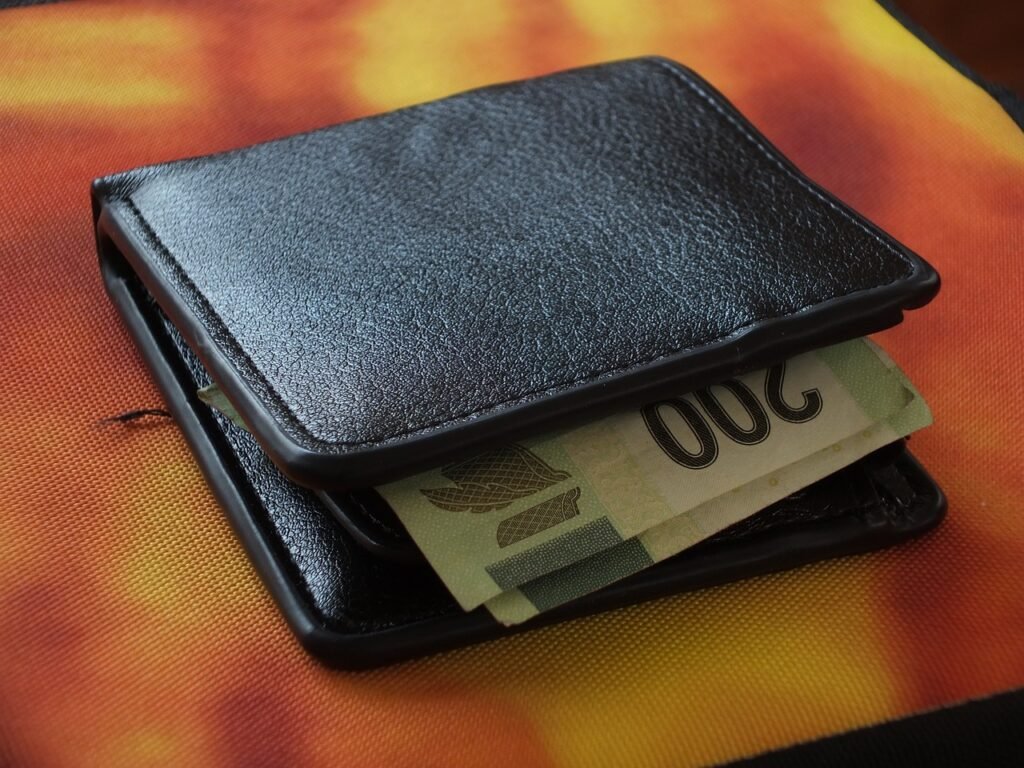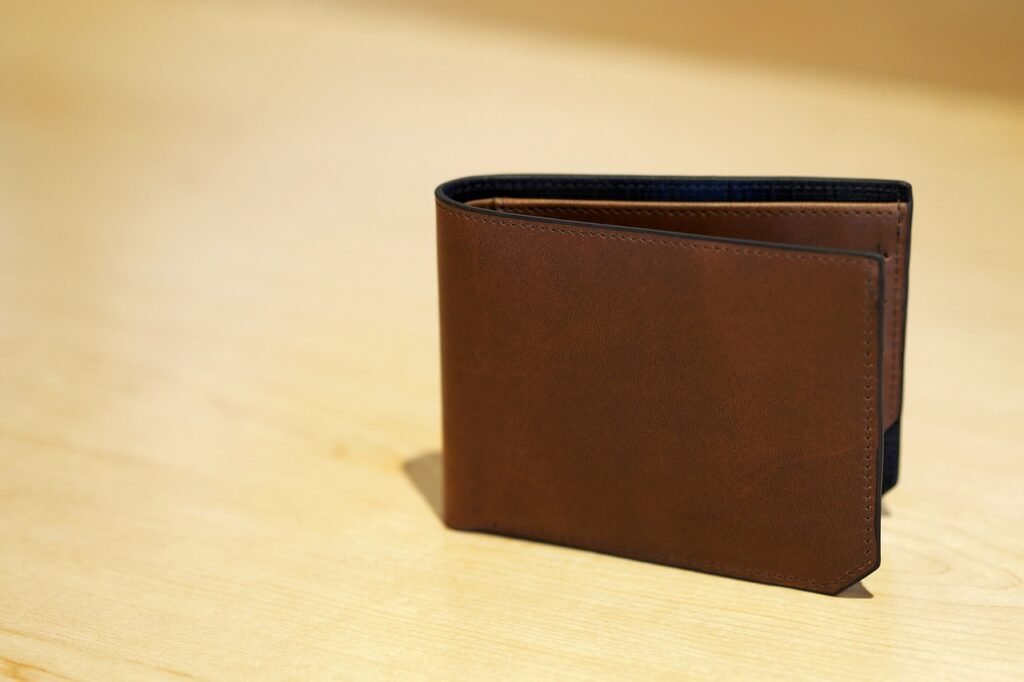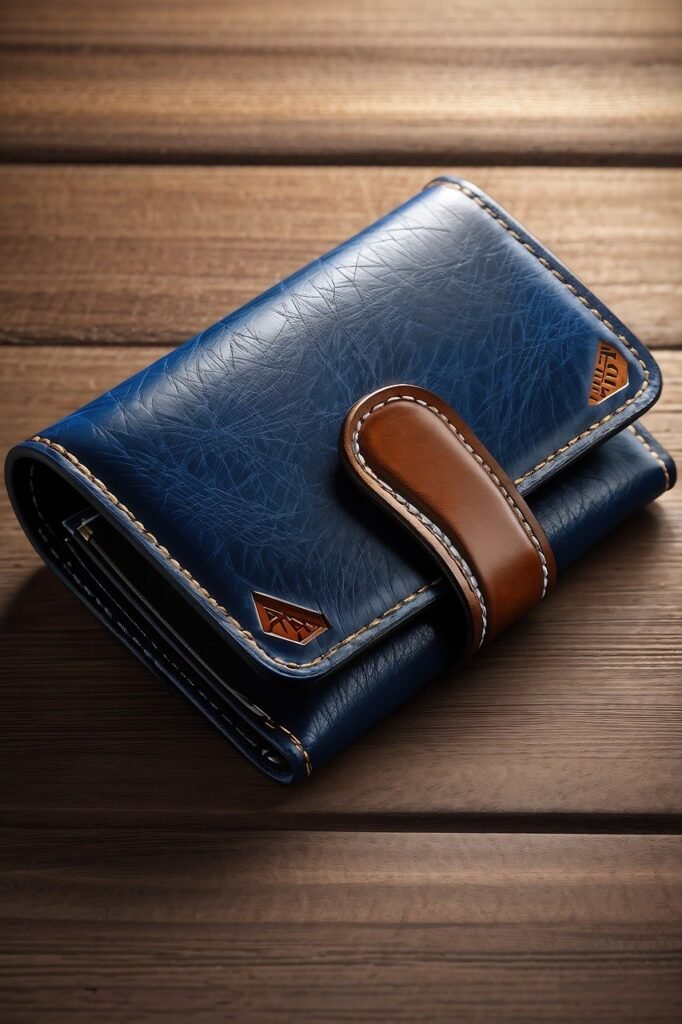Choosing a long-lasting leather wallet can be daunting with the wide array of options available. However, fear not, as this ultimate guide is here to simplify your decision-making process. With a focus on durability and longevity, we will explore the key factors to consider when selecting a leather wallet that will not only withstand the test of time but also complement your personal style. From the quality of the leather to the stitching and functionality, this guide will equip you with the knowledge to make an informed choice and invest in a wallet that will be your trusty companion for years to come.

This image is property of pixabay.com.
Consider the Leather Type
When choosing a leather wallet, it’s important to consider the type of leather used in its construction. There are several types of leather, each with its own characteristics and durability.
Full-grain leather
Full-grain leather is often considered the highest quality leather available. It is made from the outermost layer of the animal hide, which is the strongest and most durable part. Full-grain leather retains the natural imperfections and unique markings of the hide, giving it a distinct and rugged appearance. It is also highly resistant to moisture and wear, making it an excellent choice for a long-lasting wallet.
Top-grain leather
Top-grain leather is another popular choice for wallets. It is made from the second layer of the hide and is slightly more processed than full-grain leather. While it may not have the same natural imperfections as full-grain leather, top-grain leather is still durable and can withstand regular use. It is often more affordable than full-grain leather, making it a great option for those on a budget.
Genuine leather
Genuine leather is a common term used to describe leather products that have been made from split hides or lower-quality leather. While technically “real” leather, genuine leather is often less durable and may not age as gracefully as full-grain or top-grain leather. It is typically more affordable, but if you’re looking for a long-lasting wallet, it may be worth investing in a higher-quality leather.
Evaluate the Leather Quality
Once you’ve determined the type of leather you prefer, it’s essential to evaluate the overall quality of the leather used in the wallet.
Thickness
A good-quality leather wallet should have a substantial thickness. Thicker leather is more durable and less prone to tearing or wearing out over time. When inspecting a wallet, feel the leather between your fingers. It should feel sturdy and substantial, rather than thin and flimsy.
Texture
The texture of the leather can also indicate its quality. High-quality leather will have a smooth, supple texture that feels luxurious to the touch. Avoid wallets with rough or overly processed leather, as these are signs of lower quality and may not hold up well with regular use.
Suppleness
Suppleness refers to how flexible and pliable the leather is. A good-quality leather wallet should have a certain level of suppleness, allowing it to mold and conform to your pocket without losing its shape. Avoid wallets that feel stiff or rigid, as they may be prone to cracking or breaking over time.

This image is property of pixabay.com.
Check the Stitching
The stitching of a leather wallet plays a crucial role in its durability and longevity. Pay close attention to the following aspects when evaluating the stitching.
Type of stitching
The type of stitching used in a wallet can affect its strength and durability. Look for wallets with reinforced stitching, such as saddle stitching or double stitching. These types of stitching are known for their durability and are less likely to come undone over time.
Stitch density
The density of the stitching is another important factor to consider. The stitches should be tight and close together, ensuring that they won’t unravel easily. Loose or uneven stitching can indicate poor craftsmanship and may lead to premature wear and tear.
Stitch strength
In addition to the density, the strength of the stitching is crucial. Pull gently on the stitches to test their strength. They should hold up without breaking or coming loose. Reinforced or waxed thread is often used for strong stitching that can withstand regular use.
Assess the Hardware
While the leather itself is a significant factor in the durability of a wallet, it’s essential not to overlook the quality of the hardware used.
Zipper quality
If the wallet has a zipper compartment, make sure to check the quality of the zipper. It should move smoothly without getting stuck or snagged. Look for zippers made of durable materials like stainless steel or high-quality plastic. Avoid wallets with cheap, flimsy zippers that are likely to break or malfunction.
Clasp or snap durability
Some wallets have clasps or snaps to secure them shut. Evaluate the strength and durability of these closures. They should open and close effortlessly and hold the wallet securely. Avoid wallets with flimsy or weak clasps that are prone to breaking or coming undone.
Metal material
For wallets with metal accents or details, such as a logo or rivets, it’s important to assess the quality of the metal material. Look for metals like stainless steel or brass that are sturdy and resistant to rust or corrosion. Avoid wallets with cheap, lightweight metals that may tarnish or deteriorate over time.

This image is property of pixabay.com.
Consider the Wallet Design
The design of a wallet is not only a matter of personal preference but also plays a role in its functionality and durability. Consider the following designs when choosing a long-lasting wallet.
Bifold
The bifold design is perhaps the most traditional and widely recognized wallet style. It folds in half, typically with card slots on one side and a money compartment on the other. Bifold wallets are compact and fit easily in pockets. They also tend to be more durable, as there are fewer seams or stitching compared to other designs.
Trifold
Trifold wallets are similar to bifold wallets but fold into thirds instead of in half. They offer more card slots and storage space but may be bulkier and less compact. When choosing a trifold wallet, make sure the leather and stitching are of high quality to ensure their longevity.
Money clip
For those looking for a minimalist wallet design, a money clip wallet may be a great option. These wallets typically have a metal money clip on one side and card slots on the other. Money clip wallets are slim and lightweight, making them convenient to carry. However, check that the money clip is sturdy and can securely hold your cash.
Card holder
Card holder wallets are ideal for individuals who primarily use cards and prefer a slim, minimalist design. These wallets typically have several card slots and no separate compartment for cash. When selecting a card holder wallet, consider the number of card slots and the quality of the leather and stitching, as these factors contribute to durability.
Determine the Wallet Size
The size of a wallet is an important consideration, as it should not only fit your needs but also fit comfortably in different pockets.
Consider your needs
Think about how many cards, cash, and other items you typically carry in your wallet. If you have many cards and need ample storage space, a larger wallet may be necessary. However, keep in mind that a larger wallet may be bulkier and less comfortable to carry.
Fit in different pockets
Consider the pockets you typically use to carry your wallet. If you primarily use back pockets, choose a wallet that fits comfortably in that space. However, be cautious with larger wallets in back pockets, as they may be more prone to damage or theft. For front pocket carry, opt for a slim, compact wallet that won’t be too obtrusive.
Check the Card Slots
The number and quality of card slots in a wallet can significantly impact its functionality and durability. Take the following factors into account when examining the card slots.
Number of card slots
Consider how many cards you typically carry and ensure the wallet has enough card slots to accommodate them comfortably. Note that cramming too many cards into a tightly packed wallet may strain the leather and cause premature wear.
Quality of card slots
Inspect the card slots to ensure they are well-constructed and made from durable materials. The slots should be snug enough to hold your cards securely but not so tight that they’re difficult to insert or remove. Any stitching or edges around the slots should be neat and reinforced to prevent tearing or stretching.
Ease of inserting/removing cards
Test how easy it is to insert and remove cards from the slots. The slots should have enough flexibility and space for smooth card transactions. Avoid wallets with narrow or stiff card slots, as they can be frustrating to use and may damage your cards over time.
Evaluate the Money Compartment
If you prefer to carry cash in your wallet, it’s essential to evaluate the money compartment for size, accessibility, and durability.
Size and accessibility
Check the size of the money compartment to ensure it can comfortably fit your cash, folded bills, or any other items you may want to store. Consider whether the compartment opens fully, making it easy to access your cash without difficulty. A well-designed money compartment should strike a balance between secure storage and convenient access.
Durability
The money compartment should be made from quality materials and have sturdy stitching to withstand the regular folding and unfolding that occurs when accessing your cash. Avoid wallets where the money compartment feels flimsy or poorly constructed, as this may result in tearing or damage over time.
Consider RFID Protection
In today’s digital age, protecting your credit card information from electronic theft is becoming increasingly important. RFID-blocking technology can help safeguard against unauthorized scanning of your cards.
RFID-blocking technology
Wallets with RFID-blocking technology contain a special lining or material that prevents radio waves from accessing your card information. This technology is designed to block the radio frequency used by contactless payment cards and passports, preventing potential identity theft.
Effectiveness
When considering an RFID-blocking wallet, research the effectiveness of the specific technology used. Look for wallets that have been tested and proven to protect against RFID skimming. Customer reviews and independent testing can provide valuable insights into the effectiveness of the RFID-blocking feature.
Assess the Brand and Reputation
The brand and reputation of a wallet manufacturer can offer insights into the quality and durability of their products. Consider the following factors when assessing the brand and reputation.
Customer reviews
Read customer reviews to get a sense of the experiences others have had with the brand’s wallets. Look for reviews that specifically mention durability and longevity. Positive reviews from satisfied customers can indicate that the brand prioritizes quality and customer satisfaction.
Brand history
Consider the brand’s history and how long they have been producing leather wallets. Brands with a long-standing reputation for excellence and craftsmanship are more likely to consistently produce high-quality and durable products.
Warranty
A strong warranty can give you peace of mind when purchasing a leather wallet. Look for brands that offer warranties against manufacturing defects or premature wear and tear. A warranty demonstrates the brand’s confidence in their product and their commitment to customer satisfaction.
In conclusion, selecting a durable leather wallet involves considering several factors. By evaluating the leather type, quality, stitching, hardware, design, size, card slots, money compartment, RFID protection, and brand reputation, you can make an informed decision and choose a long-lasting leather wallet that meets your needs and style preferences. Remember, investing in a high-quality leather wallet is a wise decision as it will provide you with years of reliable use and timeless style.
